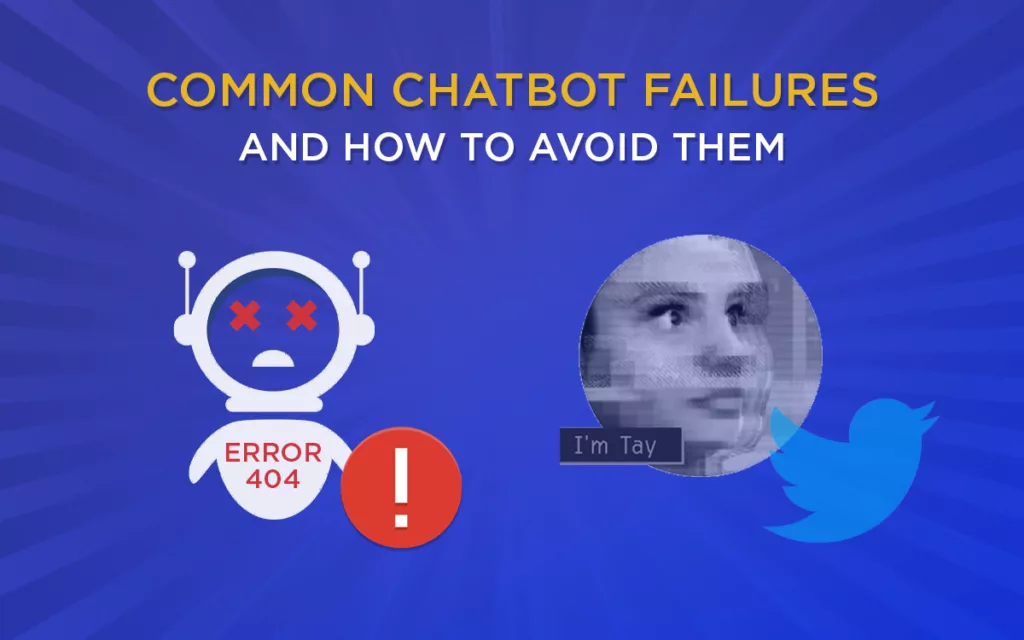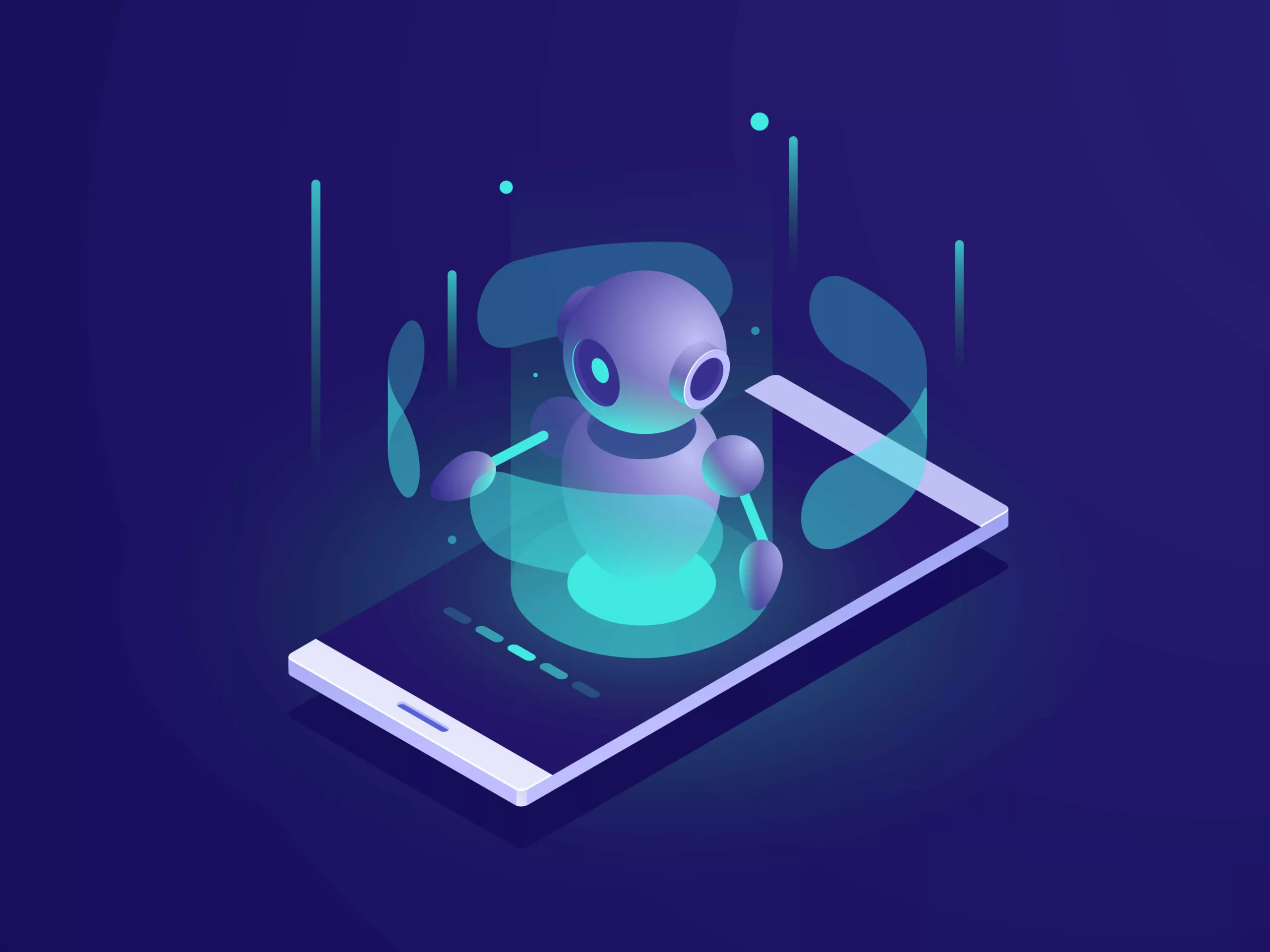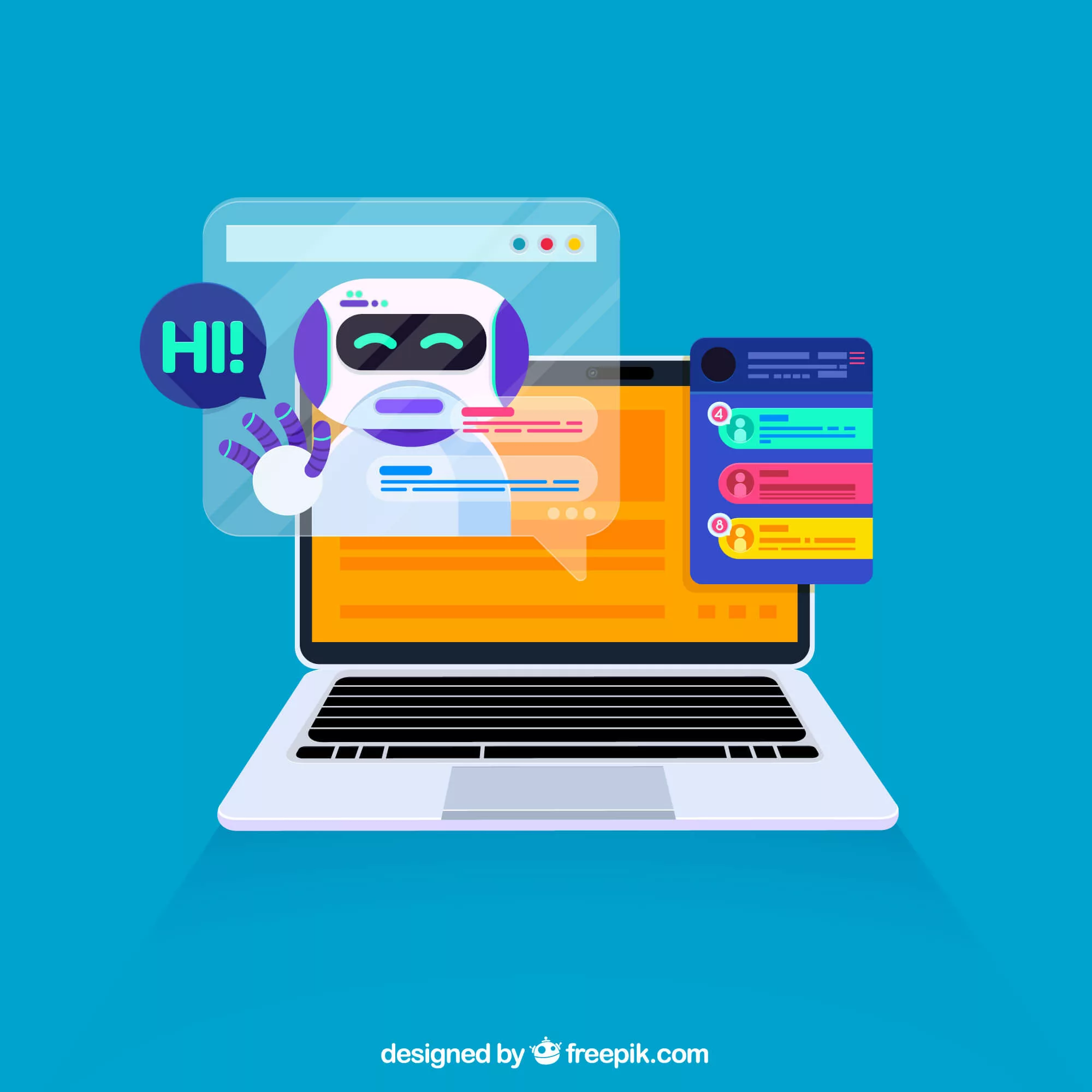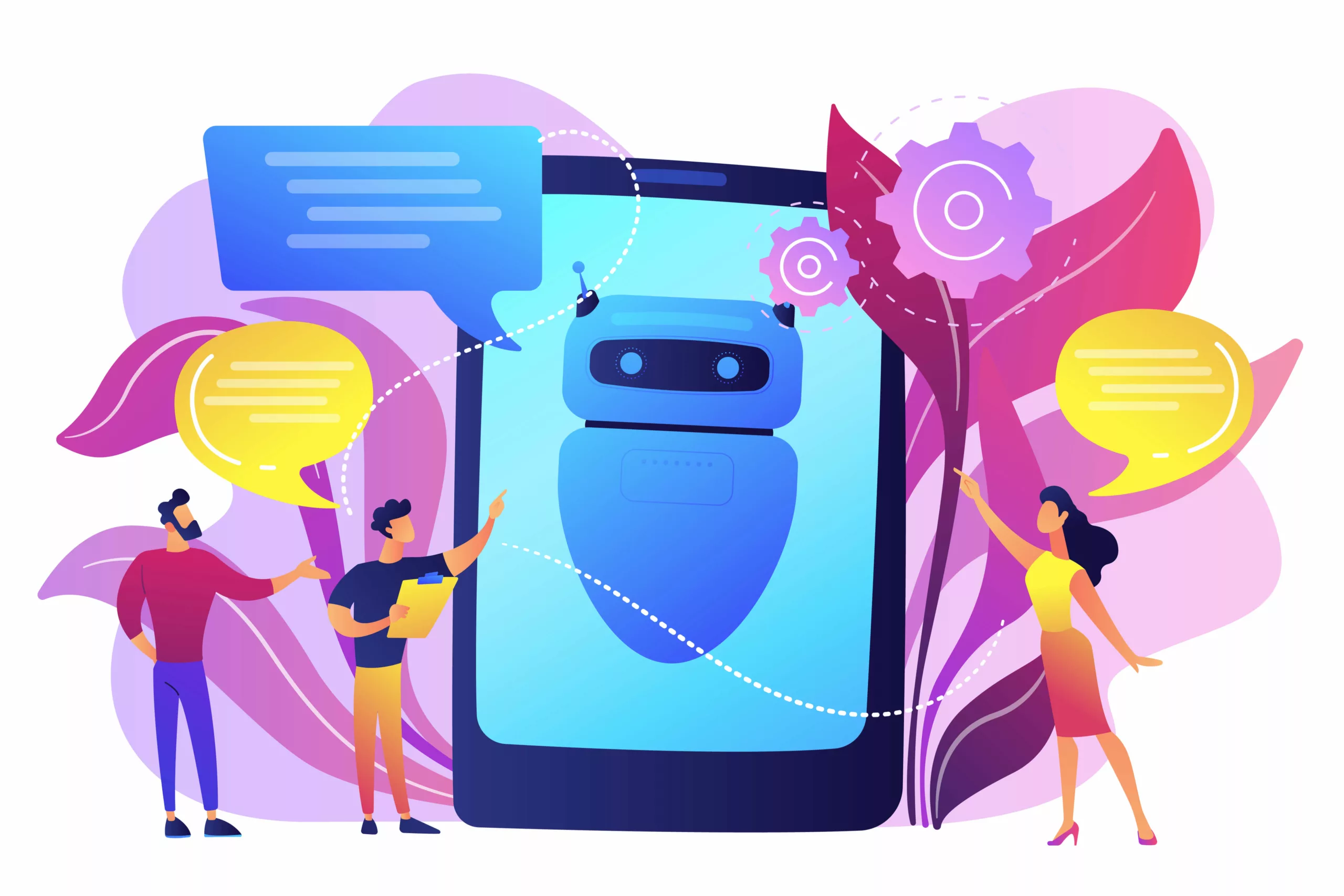Source: csoonline.com
When the world was introduced to first-generation chatbots more than a decade ago, the buzz around it fizzled out soon—the reason being the overhyped expectation about the success of the supposedly human-mimicking software. Back then, rule-based technology lacked the power to bring out the desired results.
However, the third-generation chatbots of today are equipped with advanced artificial intelligence techniques. Even then, we come across instances where AI chatbots deliver unpleasant user experiences and create a negative brand image for organizations.
Remember the infamous Tay, a Twitter chatbot from the software giant Microsoft? It was designed to learn from Twitter conversations. Within 24 hours of its launch, she took the world by surprise after posting a series of offensive tweets, forcing Microsoft to suspend her Twitter account.
It is just an example of the numerous AI chatbot failures. In this article, we discuss the most common AI chatbot failures. We also discuss how you can prevent them from becoming a liability rather than an asset to your organization.
But before that, let us understand the challenges in chatbot development that are the reasons behind such unfortunate and untoward incidents. Let us start!
Challenges Chatbot Development In AI
Source: chatbotsmagazine.com
Around 77% of businesses have deployed, while 60% are about to deploy conversational bots for after-sales and customer service. It underlines the importance of AI chatbots in business processes across various industry verticals.
However, the road to creating a perfect AI chatbot is not a smooth one. With complex technology comes complex challenges to building an efficient AI chatbot that meets your organisation’s expectations.
AI chatbots usually use natural language processing techniques to process and automate messages, mostly in text form. A common hurdle while developing an AI chatbot is creating an NLP that understands the diversity in the customer language.
For example, if a customer responds to a question with internet short-hand language such as “IDK” instead of “I don’t know,” the NLP may not be able to process the actual meaning of it. This may lead the AI chatbot to respond inappropriately or shut down.
The short attention span of customers is a crucial aspect that needs to be considered while developing an AI chatbot. The AI chatbot must be programmed in a way that responds quickly and appropriately.
For AI chatbots to be able to understand the diverse human language, they must comply with the ever-evolving natural language models. It means the AI chatbots have to be tested periodically to make them relevant to changing user demands and algorithms.
Even with these challenges, the need to implement AI chatbots in the digital era cannot be overlooked.
Before you start your journey towards creating an AI chatbot for your business, you must be aware of the possible AI chatbot failures and deploy methods to prevent them.
Common AI Chatbot Fails You Must Know
A report revealed that even with the advanced AI chatbots available today, almost 86% of users still prefer human interaction while dealing with a company. The reason is that chatbots are trained to work and respond in predictable situations. It may not always serve users with customized requests like a human agent would.
Let us look into some of the other scenarios where AI chatbots fail to serve their purpose.
1. Awkward and out-of-context conversations
In the pursuit of developing human emotions and humor to create an online persona, AI chatbots may come across as overly talkative and tend to lose credibility.
A chatbot cannot sound monotonous and robot-like, as it will drive away from the users. It also must not be aggressive in its approach to sound like a human, as it leads to illogical conversations that do not serve the user’s purpose.
The once-popular, good-old Pancho, the weather bot, went overboard with being friendly, leaving the user frustrated.
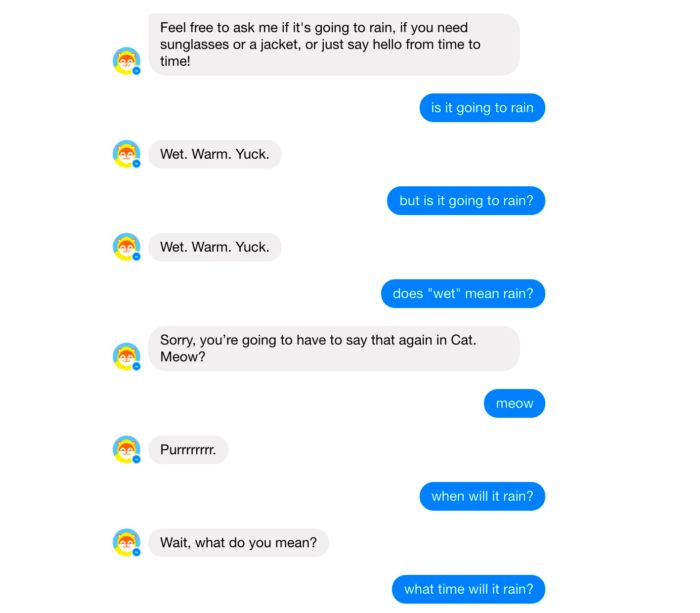
Source: chatbotsmagazine
2. Unexpected conversation dead-ends
One of the most annoying and common chatbot failures is getting shut down in the middle of a conversation. A user might be repeatedly sending out requests just to be disappointed with a cold or irrelevant response.
It may happen due to numerous reasons. It could be a technical glitch. It could also be because the bots fail to understand a user’s question.
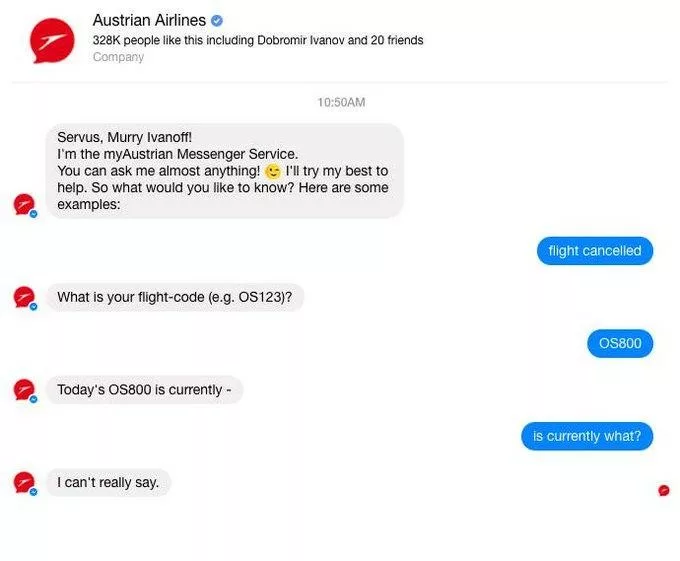
Source: twitter.com/w_nina/
3. Platform pivoting
In this social media age, every business leverages more than one social media platform to engage with users. Chatbots can sometimes redirect users from one channel to another. It may cause inconvenience to the users, as they choose to reach them through a social media platform more accessible to them.
Such responses seem vague and deter the credibility of the organisation.
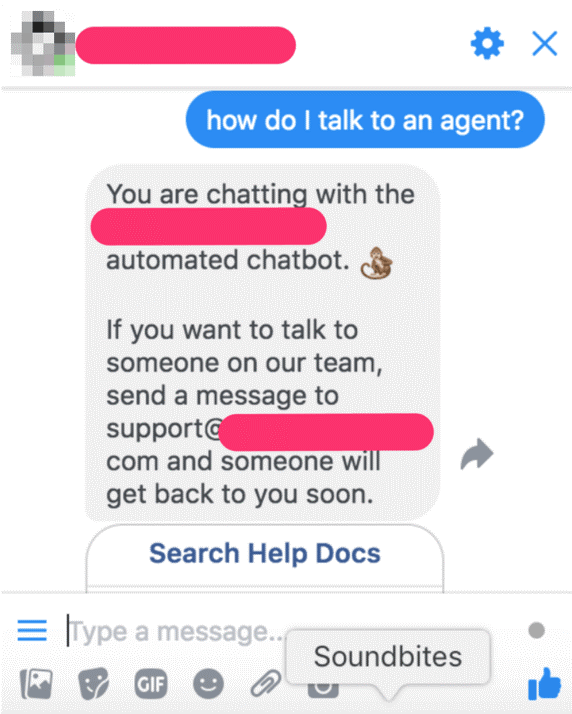
4. Unnecessary information overload
A chatbot that has lengthy responses to queries is the last thing a user wants. A user wants precise and straightforward answers. A chatbot loaded with a gamut of unnecessary information may tend to strike conversations with customers that give out a hint of desperation.

Source: diegocoquillat.com
How To Ensure A Successful Chatbot Experience?
Chatbots are now essential drivers of disruptions in almost every industry. The numbers reveal promising growth, with the chatbot industry expected to hit $1.26 billion by 2025. However, as already discussed, chatbots come with their caveats.
To avoid such situations, you need a strategic approach while creating a chatbot for your business. Here are some tips you can use to ensure your chatbot works seamlessly and garners profits for your organisation.
- Make your chatbot learn about different communication scenarios. For this, you need to assume various situations and create a comprehensive decision-making process for the bot. One effective way to do so is to conduct qualitative surveys and interviews.
- Always ensure the chatbot script includes warm welcome messages and follows basic chat etiquette.
- To make your chatbot have a relatable persona, try inculcating phrases your agents use the most in the scripts.
- Ensure the chatbots communicate with the users through the social media channel where they approached you. Avoid redirecting as much as possible.
Conclusion
Technology is evolving, and so are chatbots. Being a useful modern tool, their inclusion in the current digital space is inevitable.
The unpredictability associated with technology makes chatbots prone to the failures mentioned in the article. However, with proper planning and a superior understanding of chatbots, the rate of failure can be minimised.
eBotify creates customised AI-based chatbots and gives you an excellent foundation to create an engaging chatbot experience for your users.
Contact us to learn how our technical experts can help you with an impeccable chatbot tailored to your requirements.

